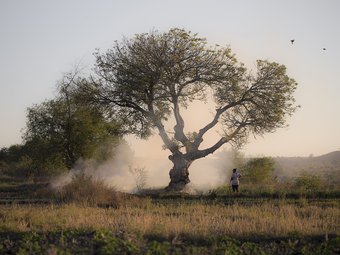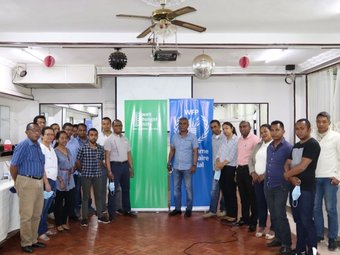Categories
Madagascar
Key facts
Hazards covered by anticipation
Drought
Anticipation partners in country
Start Network | WFP | FAO | Disaster and Risk Manamement Office (BNGRC) | Direction Generale de la Meteorologie | Welthungerhilfe
Inform Risk Index (2022)
Hazard and exposure: 3.9
Vulnerability: 5.0
Lack of coping capacity: 7.0
Total: 5.1 (high)
Rank: 41
Photo: iAko Randrianarivelo / IFRC
Country profile
Madagascar is a low-income country with poverty levels among the highest in the world. Approximately 80 per cent of the population lives on less than 1.25 US dollars per day, and 25 per cent of the population is food insecure. The economy primarily depends on smallholder agriculture, fisheries and livestock production, all of which suffer from the effects of hydrometeorological disasters.
The world’s fourth largest island, Madagascar is exposed to a number of hazards. Given its location in the Indian Ocean, it has the greatest exposure to cyclones in Africa, often experiencing multiple landfalls per year. Cyclones pose the greatest risk to the population, accounting for 85 per cent of average annual disaster losses in the country. Winds, storm surges and flooding from cyclones cause loss of life, and result in damage to infrastructure and agriculture.
After cyclones, floods pose the greatest risk, causing significant damage to people’s homes and property. Madagascar also experiences earthquakes, drought and epidemics (usually bubonic and pneumonic plagues). All of these hazards contribute to widespread increased food insecurity.
Projects
Development of forecast-based action mechanisms addressing drought-induced food insecurity in Madagascar
In 2020, Welthungerhilfe launched a project to develop predictive-based humanitarian aid mechanisms for food security in the event of drought in Madagascar. The Early Action Protocols (EAPs) created through the project reduce the risk of food insecurity among vulnerable communities, prevent negative management strategies, and minimize losses and damages among drought-affected households.
Risk layering using forecast-based financing
In 2019, WFP began supporting the national early warning system to develop a forecast model to anticipate drought.
FAO is working to support early action for drought in Madagascar.



